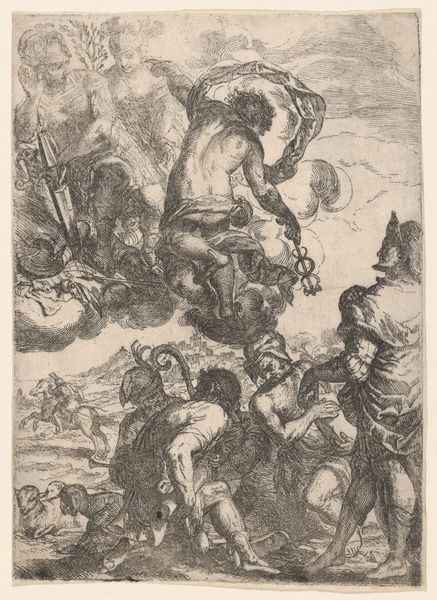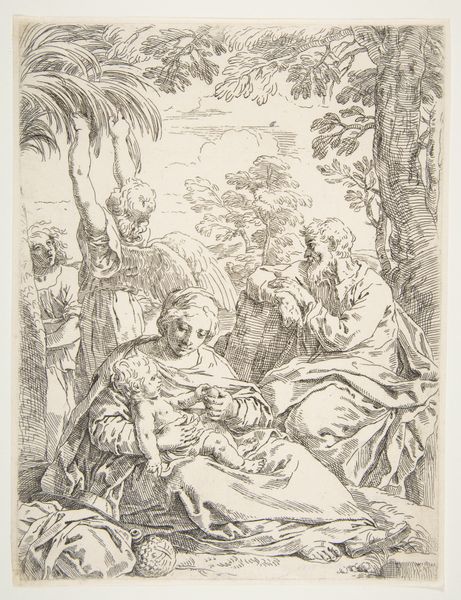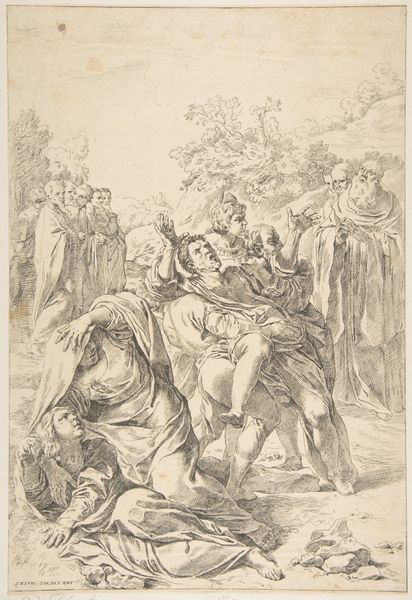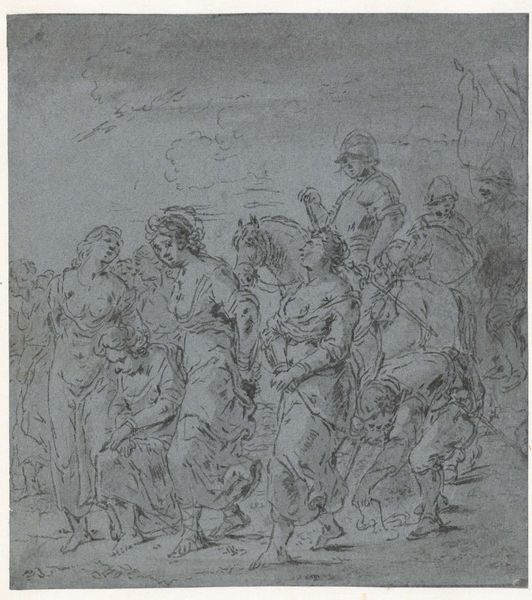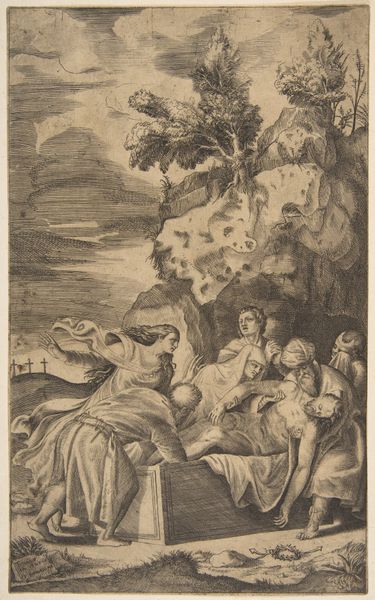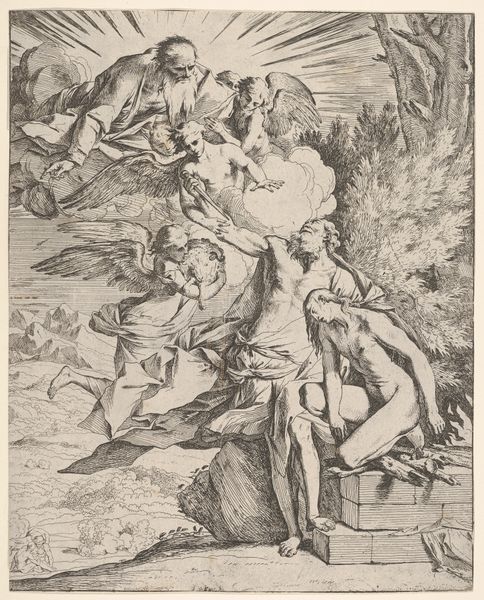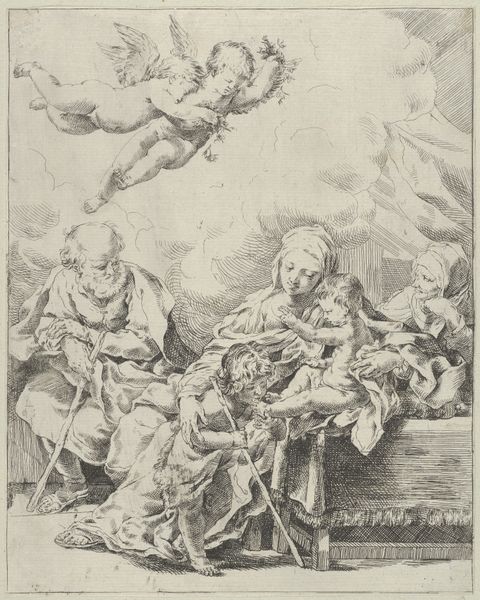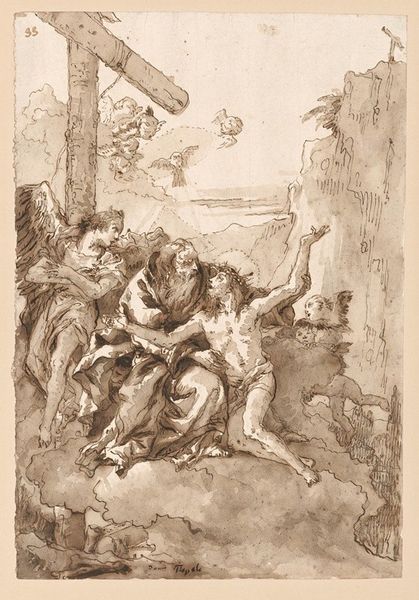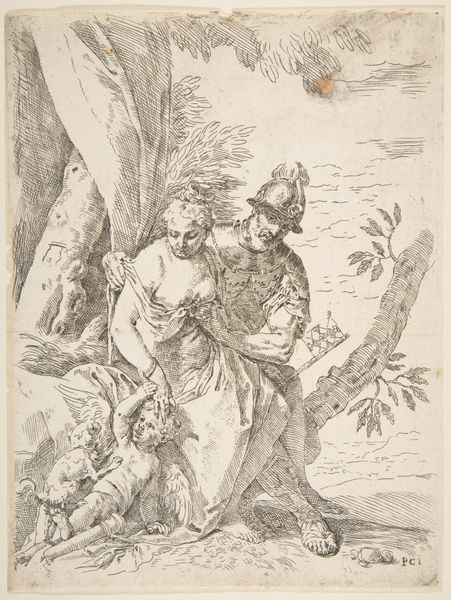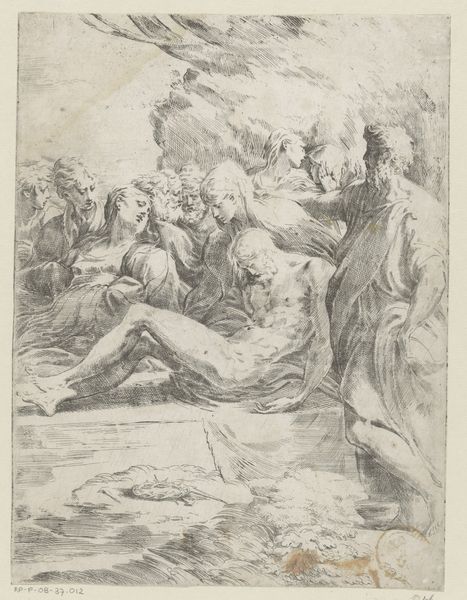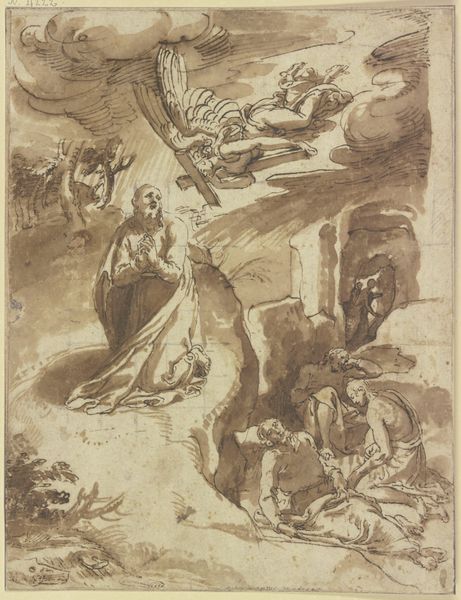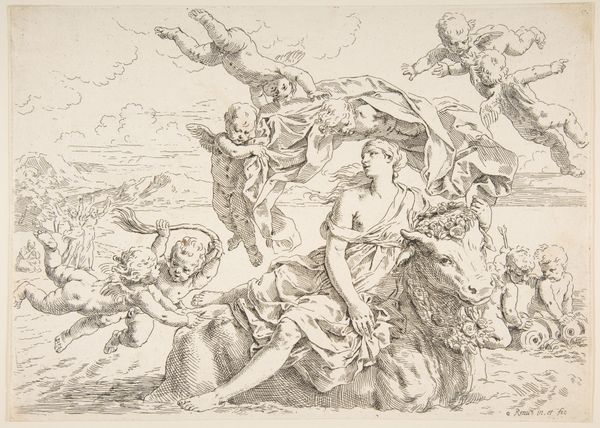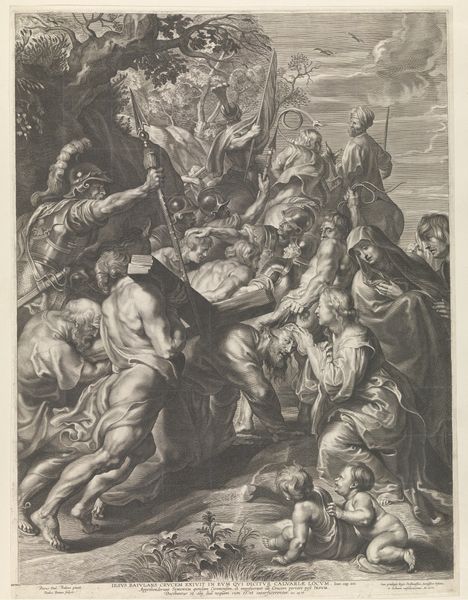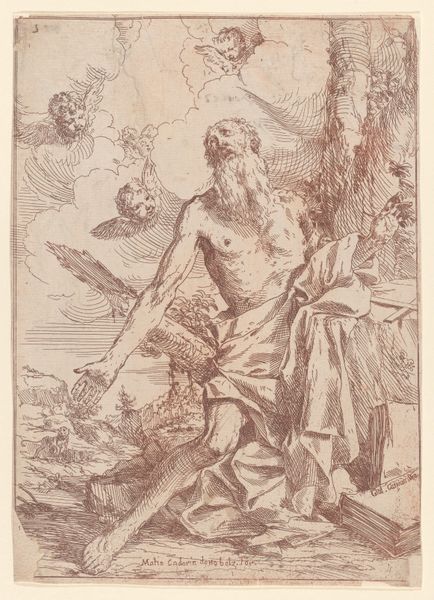
drawing, ink, indian-ink
#
drawing
#
baroque
#
ink painting
#
landscape
#
figuration
#
ink
#
indian-ink
#
history-painting
Copyright: Public Domain
Curator: What a beautifully rendered landscape teeming with figures, all created using brown ink. This is Paolo Veronese's "John the Baptist Preaching in the Wilderness," created around 1659. The location is the Städel Museum. Editor: The initial impression is one of dramatic chiaroscuro; light and shadow create an intense contrast that pulls my eye into the heart of the composition, toward that figure gesturing emphatically to the left. Curator: Veronese, steeped in Venetian artistic traditions, uses dramatic gestures and dynamic arrangements, capturing a pivotal biblical moment with remarkable sensitivity. It’s also worth noting the interesting medium, Indian ink; quite versatile. Editor: Given that it’s a depiction of John the Baptist, does the landscape hold any symbolic significance, informing us about the psychological and spiritual terrain of his teachings? The trees feel very prominent, and somewhat brooding. Curator: Absolutely. The wilderness symbolizes spiritual testing, isolation, but also liberation. Veronese echoes this by creating a scene that seems both intimate and boundless. Also, trees often act as archetypes representing wisdom, strength, and connection to the divine. Their presence suggests the enduring impact of John's message, echoing across time. Editor: You know, reflecting on it further, there’s an interesting paradox in the visual rhetoric. John is preaching in a desert, suggesting a renunciation of worldly comforts. Yet, the figures surrounding him are depicted with considerable attention to drapery, indicating a certain status. Is Veronese maybe hinting at a complex socio-religious dynamic? Curator: It’s highly probable! Religious paintings weren’t created in a vacuum. These kinds of details suggest he's acknowledging the expectations and realities of his patrons and the society in which this piece was conceived. It grounds a heavenly scene into worldly conditions. Editor: Fascinating how such a relatively small ink drawing on display here in Frankfurt opens up into such complex territory. It prompts a real reflection on landscape and human existence in early modern Europe, doesn't it? Curator: Indeed. There is more to this drawing than just religious presentation; it's a conversation about how power is embodied and taught within a society.
Comments
No comments
Be the first to comment and join the conversation on the ultimate creative platform.
